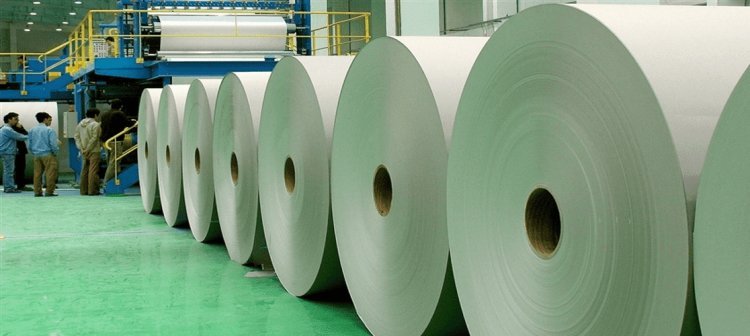Innovations in Thermal Paper Technology
Discover the latest innovations in thermal paper technology, enhancing print quality, durability, and environmental sustainability for diverse applications.

In the ever-evolving world of printing and documentation, thermal paper has become an indispensable component across various industries. From retail receipts to medical records, thermal paper is widely used due to its convenience and efficiency. However, as technology advances, so does the need for innovations in thermal paper technology. This article explores the latest developments in thermal paper, focusing on improvements in print quality, environmental sustainability, durability, and multifunctionality.
Enhanced Print Quality
One of the most significant innovations in thermal paper technology is the improvement in print quality. Historically, thermal paper produced prints that could fade over time, making them unsuitable for long-term archiving. New advancements in thermal paper formulations have led to the development of higher-quality thermal papers that offer sharper images and more vibrant colors. Manufacturers are now using advanced coating techniques and chemical formulations to enhance contrast and ensure longevity.
For instance, some thermal papers are treated with a proprietary coating that enhances print clarity and reduces blurriness. These innovations not only improve the aesthetic appeal of printed materials but also ensure that important information remains readable for extended periods, meeting the needs of businesses that require reliable documentation.
Durability and Resistance
Another area of innovation is the durability of thermal paper. In many applications, especially in retail and logistics, receipts and labels are exposed to various environmental factors, such as moisture, heat, and UV light. New thermal paper technologies now include protective coatings that enhance resistance to these elements.
Some suppliers have introduced water-resistant and tear-resistant thermal papers, which are particularly beneficial in industries like food service and outdoor retail, where exposure to moisture is common. This durability reduces waste, as businesses no longer need to reprint damaged or illegible receipts, leading to cost savings and improved operational efficiency.
Eco-Friendly Alternatives
As the world becomes more environmentally conscious, thermal paper suppliers are innovating to develop eco-friendly alternatives. Traditional thermal papers often contain bisphenol A (BPA) or bisphenol S (BPS), which raise health and environmental concerns. In response, manufacturers are now offering BPA-free and BPS-free thermal papers that maintain print quality without compromising safety.
Additionally, there is a growing trend towards using recycled materials in the production of thermal paper. Some companies have pioneered processes to create thermal paper from post-consumer waste, significantly reducing the environmental impact associated with paper manufacturing. These eco-friendly options allow businesses to demonstrate their commitment to sustainability while still fulfilling their printing needs.
Multifunctional Thermal Paper
In recent years, the demand for multifunctional thermal paper has surged, driven by the need for versatility in various applications. Innovations have led to the development of thermal papers that can be used for multiple purposes, such as printing, labeling, and even creating stickers.
Some thermal papers are now designed with advanced adhesives, allowing them to adhere to various surfaces without the need for additional labels or adhesives. This feature is particularly useful in industries like logistics and shipping, where labels must withstand handling and transportation without peeling or fading.
Furthermore, there are thermal papers equipped with QR code printing capabilities, enabling businesses to enhance customer engagement through interactive features. By integrating technology into thermal paper, suppliers are offering businesses new ways to connect with customers while streamlining their operational processes.
The Role of Digital Transformation
The rise of digital transformation in business processes has also influenced innovations in thermal paper technology. With more companies adopting digital solutions for invoicing and receipts, the demand for seamless integration between digital platforms and thermal printing has increased.
Innovative software solutions are now being developed to streamline the printing process, allowing users to send digital documents directly to thermal printers with minimal effort. This integration not only enhances efficiency but also reduces the likelihood of printing errors. Businesses can now easily generate customized receipts and labels that align with their branding, all while ensuring high-quality output.
Conclusion
The innovations in Thermal Paper Supplier reflect the ongoing changes in the printing landscape and the needs of various industries. Enhanced print quality, improved durability, eco-friendly alternatives, multifunctional applications, and digital integration are just a few areas where advancements have been made. As businesses continue to seek efficient, cost-effective, and sustainable printing solutions, thermal paper suppliers are poised to meet these demands through ongoing research and development.
With these innovations, thermal paper is not just a medium for printing; it is evolving into a versatile tool that can adapt to the changing needs of modern business. As the industry progresses, it will be fascinating to see how further advancements continue to shape the future of thermal paper technology. The journey towards more sustainable and functional thermal printing solutions is just beginning, promising a bright future for businesses that rely on this essential material.
What's Your Reaction?

















